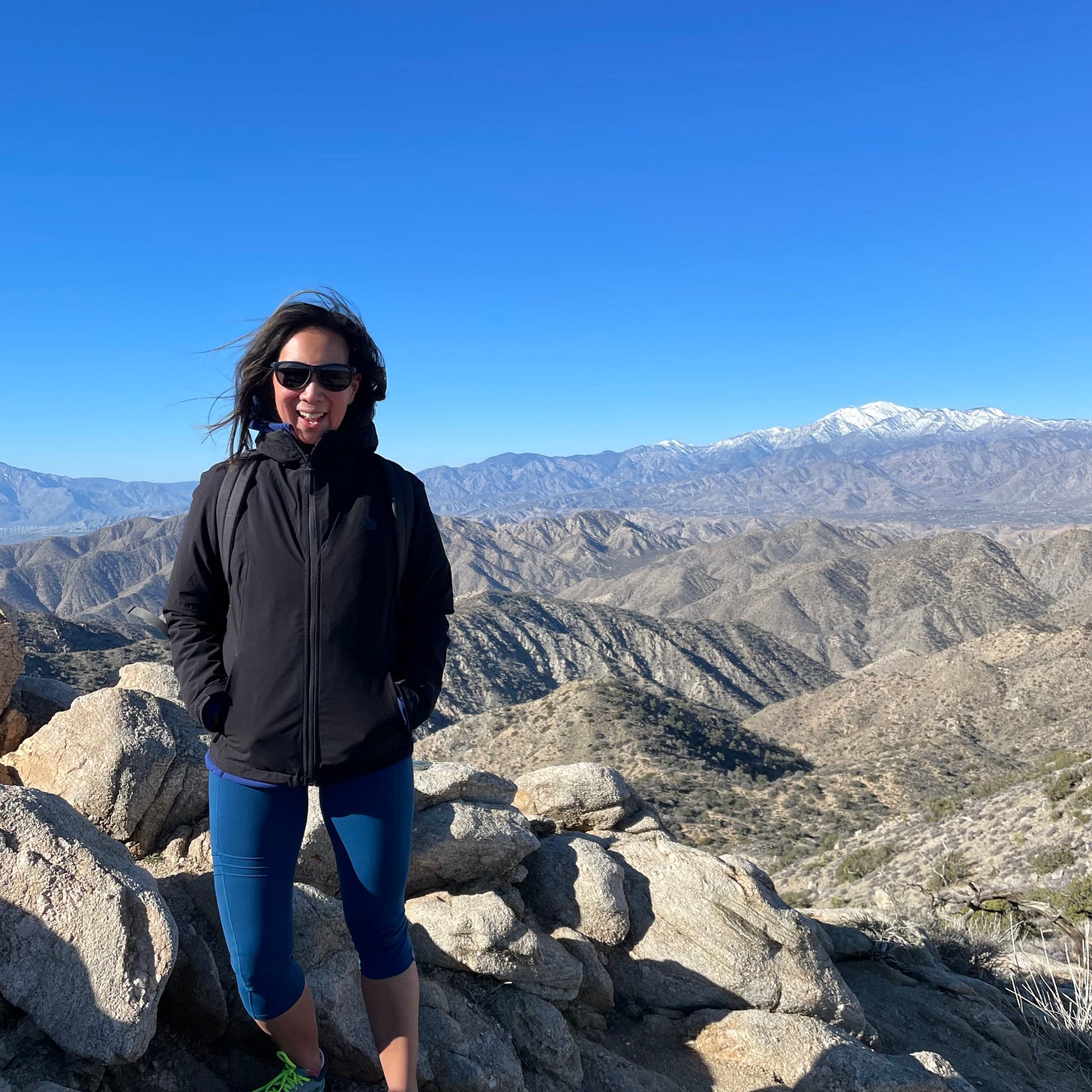There’s No Expiration Date on Women’s Active Lives
Every life stage is a potential new chapter is a woman’s athleticism. Here’s how to navigate puberty, menstrual cycles, pregnancy, and menopause.
Soon after my 43rd birthday, my fitness dropped off precipitously and without warning. I was healthy. I hadn’t made any major changes to my workout routine. And yet, running left me zapped when it used to energize me. My muscles seemed to be atrophying before my eyes. I woke up with more mysterious aches than ever before.
My husband joked that everything goes downhill after forty, but I refused to believe him. Age is just a number, isn’t it?
Or was physical activity no longer compatible with my middle-aged body? Studies show that age-related declines in cardiovascular fitness, strength, and bone density are real. Was this a preview of what lies ahead as I approach menopause?
I’ve been thinking a lot about what it means to be a lifelong athlete—what facilitates our ability to be physically active and what gets in the way of it.
The menopause transition isn’t the only life stage rife with pitfalls for women who want to stay active. Puberty is presumed to impair sports performance in girls. Menstruation is believed to keep women from performing their best. Pregnancy is supposed to signal the end of a person’s athletic prime.
Sports science research to date has been mostly focused on understanding men and male bodies, leading to gaps in our understanding of female physiology and allowing myths about the athletic potential of women to persist.
But as researchers learn more about women and exercise science, they’re validating the fact that women’s active lives don’t have an expiration date, nor are they limited by certain life stages.
So how can we navigate it all?
Is puberty an inevitable setback for girl athletes?
The rapid physical transformation of puberty can alter a girl’s motor skills, biomechanics, and injury risk. She may feel clumsy and experience a temporary disruption in athletic skills and progression, says Ellen Casey, MD, a physiatrist specializing in women’s sports at the Hospital for Special Surgery.
From the outside, it appears as if she’s taken a step backwards because of puberty. Plus, widening hips, growing breasts, and gaining weight can draw attention to girls’ bodies that can make them feel awkward and self-conscious. 51 percent of girls drop out of sports by age 17.
But these changes are part of the normal development process and most aspects of performance improve because of maturation, according to Casey.
The problem isn’t girls’ bodies. It’s that they aren’t getting the support they need.
Girls need time to adapt to their changing bodies. Coaches can adjust training loads depending on a girl’s stage of maturation. When she is growing fastest, lower volume and intensity can reduce the risk of overuse and growth plate injuries, Casey says. Coaches can also incorporate strength training to address areas of weaknesses and make girls’ bodies more resilient. Even providing access to sports bras can make a big difference—one in two adolescent girls say breasts are a barrier to physical activity.
Most importantly, girls shouldn’t try to prevent puberty or stall the menstrual cycle. Doing so can have long-term health repercussions, especially an increased future risk of stress fractures and osteoporosis.
Girls accrue approximately 90 percent of their adult bone mass during adolescence and need estrogen, which rises and falls during the menstrual cycle, to build and protect bone health.
Casey says the cycle should begin by age 15 and it shouldn’t stop once it starts. Good, adequate nutrition is one of the best ways to ensure a regular cycle.
How can women avoid getting sidelined by periods?
Period symptoms are real. A recent study found that more than 80 percent of exercising women report cycle-related symptoms like abdominal cramps, headaches, breast pain, fatigue, and mood changes.
These symptoms aren’t trivial. Women experiencing period symptoms are 33% less productive at work. There aren’t studies that look specifically at changes in activity levels, anecdotally, but women say they will change or skip a workout because of these issues.
While these symptoms seem to be the result of fluctuating hormones, Alyssa Olenick, PhD, an exercise physiologist at the University of Colorado, says don’t be so quick to blame the menstrual cycle.
Instead, Olenick recommends looking at the bigger picture. Ensure that you’re fueling your body well throughout the day. Get plenty of sleep. Pay attention to recovery. She says that often when clients tweak these areas, they feel better during the day and during their workouts, addressing a good portion of their symptoms.
Not everyone has a cookie-cutter, 28-day cycle and cycles can change month-to-month and across the lifespan. Keeping notes on your cycle for at least three months can help uncover patterns in your symptoms and understand how your hormones may—or may not—affect you.
With this information in hand, you can make informed decisions about modify your workouts. Maybe decrease the intensity during the days you know you’re prone to cramps. Maybe moving a more important, quality workout to a day when you feel energetic.
Lastly, it’s important to maintain a regular period. The monthly surge of hormones is essential for overall health. An absent or irregular cycle may be a sign of relative energy deficiency in sport (RED-S), a condition where the body isn’t getting enough fuel to meet the demands of exercise and daily life. RED-S can affect bone health, immunity, metabolism, cardiovascular health, mental health, and athletic performance.
What’s the right way to resume exercise after pregnancy?
Most women are told they can resume physical activity at their six-week postpartum visit. However, that doesn’t mean they are ready to start exercising, said Abby Bales, DPT, a New York City-based pelvic floor physical therapist and founder of Reform Physical Thearpy.
“The six-week medical clearance is meant to say that your tissues have healed and there’s no infection,” she said. “It was never intended to be clearance for sports.”
Recovery depends on a person’s birth experience, breastfeeding status, and nutrition. It can take up to six months for the pelvic floor muscles and connective tissues to heal. After childbirth, the body is depleted of estrogen until the menstrual cycle returns, making it harder to build and maintain muscle and bone, Bales said.
The postpartum period is often a blur as you adjust to life with a new member of the family. In particular, it can be a challenge to eat adequately and consistently, leaving postpartum women, especially those who are breastfeeding, at risk of developing RED-S.
Returning to exercise too quickly can lead to bone stress injuries, separation of the abdominal muscles, and pelvic floor dysfunction, including urine or fecal incontinence, pain with sex, or pelvic organ prolapse. While common, these conditions are by no means normal and can affect quality of life and a person’s willingness to exercise.
Historically, there’s been little guidance to guide women in their return to physical activity and sport. That’s starting to change. One of the first guidelines to offer evidence-based recommendations for postpartum women returning to running was released in 2019.
Experts recommend holding off on high-impact exercise initially in favor of a progressive program that begins with pelvic floor rehabilitation. Breathing exercises and pelvic tilts help reestablish neuromuscular control and retrain the pelvic floor and core muscles, which are foundational to the musculoskeletal system. Ideally, Bales likes to see women before pregnancy but said it’s crucial to see people soon after childbirth.
For the first three months, stick with low-impact exercise., add “We want to be careful with plyometrics, jumping, and very quick motions,” Bales said because the body isn’t quite ready to respond to the increased load.
Between four and eight weeks postpartum, add simple bodyweight strength training like squats and bridges to build bone density and muscle. After three months, consider resuming higher impact activities like running but use a graded approach like a run-walk program.
Recovery looks different for everyone and depends on menstrual cycle status, sleep, and nutrition. Listen to your body and your healthcare provider’s advice.
Is menopause really the end of an active lifestyle?
The loss of power and endurance I’ve experienced in my forties is likely caused by erratically fluctuating hormones. Decline in estrogen during the menopause transition, the turbulent phase leading to the end of the menstrual cycle, can alter muscle function, fat storage patterns, and training adaptability. No wonder my body doesn’t respond to exercise like it used to.
Anticipating these changes can create opportunities to work with your physiology rather than fight it. “It’s not a death sentence to your athleticism, health, or performance. It’s simply a new hormonal state,” Olenick says. “You can still grow muscle and improve your health. You can still train and perform.”
Exercise will look different than it did in your twenties or thirties. Experts suggest incorporating more strength training to stimulate muscle and bone growth. This can make up for declining estrogen levels and age-related losses. High-intensity interval training can activate fast twitch muscles and reduce fat, including visceral fat.
Olenick recommends checking in with yourself and using rate of perceived exertion (RPE) to calibrate your workout on any given day. If you feel energized, stick with your routine. If you feel sluggish, modify your program to suit your capacity.
Consistency is more important than intensity per se. Studies suggest that regular exercise can offset symptoms associated with menopause. When you feel better, you’ll be more motivated to continue working out.
Women’s bodies go through numerous transition across the lifespan. Redefining what it means to be active during these phases can help you maintain a lifelong athletic lifestyle.
“The culture we’re brought up in and the archaic narratives about women’s bodies heavily influences women’s perception of what they can do and of themselves as athletes,” Olenick says. “We are more than just periods and hormones.”







Reading this post makes me want to read more :-) I'm looking forward to getting your book.
For what it's worth, I experienced a big difference in performance from early 40s to late 40s. My early 40s, I was still rocking it ... I PR'ed at the marathon at 39 and then had five-plus solid years in my 40s of top ultramarathon performances (e.g. sub 24 at Western States 100, podium finishes at some 50Ks). It was in my late 40s everything turned "creaky" and slow as I entered perimenopause with erratic, strong periods and PMS symptoms. In any case, I'm 54 now, about 18 months fully past menopause, and still running, but so slowly and stiffly. I started HRT and haven't noticed any improvement or difference really. Long way of saying, I look back on when I was your age with nostalgia and tell other women who turn 40 that the forties are the best!
I'm turning 60 and I'm swimming the longest pool in Canada, faster and for longer, than I have in my entire life. Key advice from my 98 year old mother-in-law: use it or you lose it. Let the ebbs and flow of the female body not be the focus, but the ability to move be relished and sustained, however fast or slow. Thank you for the article. EW